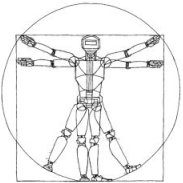Robotics: Science and Systems VIII
M-Width: Stability and Accuracy of Haptic Rendering of Virtual Mass
Nick Colonnese, Allison OkamuraAbstract:
"In many physical human-robot interaction scenarios, such as haptic virtual environments for training and rehabilitation, it is desirable to carefully control the apparent inertia of a robot. Inertia compensation can be used to mitigate forces felt by the user during free-space motion, and rendering of additional inertia is desired for particular rehabilitation and training procedures. Many factors influence the stability and accuracy of rendering for haptic display of a pure mass, including device mechanical properties, sample rate, control structure, and human behavior. Inspired by the ""Z-Width"" approach to haptic device stability and performance analysis, we introduce ""M-width"", which we define as the dynamic range of virtual masses renderable in a stable manner. We identify the important parameters for system stability, find stability boundaries, and describe the expected accuracy of the haptic rendering for a canonical haptic system. These results serve as a design tool for designing haptic environments implementing mass, establish limits of performance, and lay the groundwork for new controllers to improve mass rendering."
Bibtex:
@INPROCEEDINGS{Colonnese-RSS-12,
AUTHOR = {Nick Colonnese AND Allison Okamura},
TITLE = {M-Width: Stability and Accuracy of Haptic Rendering of Virtual Mass},
BOOKTITLE = {Proceedings of Robotics: Science and Systems},
YEAR = {2012},
ADDRESS = {Sydney, Australia},
MONTH = {July},
DOI = {10.15607/RSS.2012.VIII.006}
}
